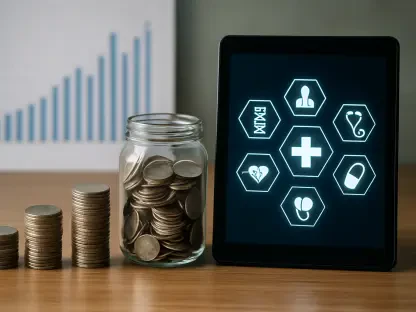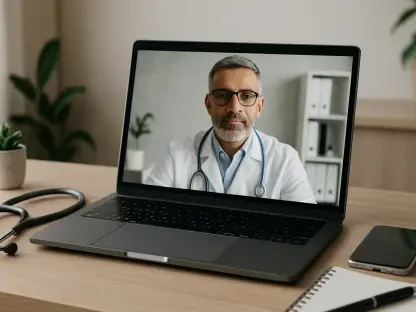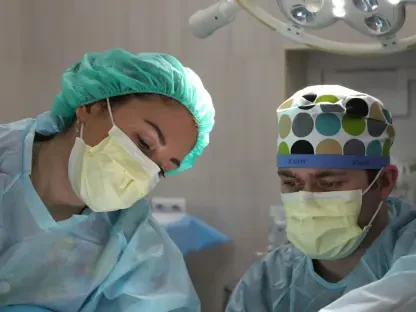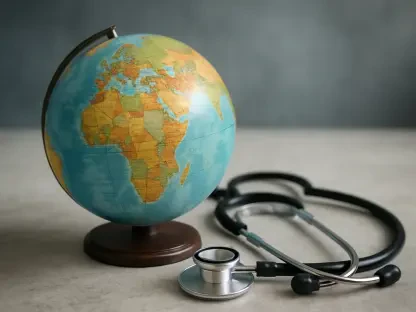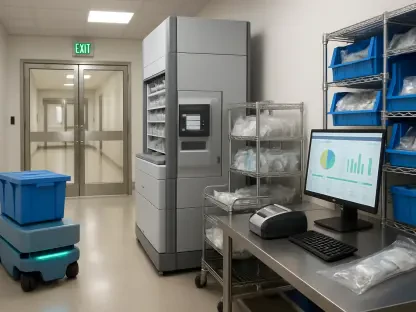Fax technology has long been perceived by many as a relic of the past, a vestige of an era overtaken by advanced digital communication. However, within the healthcare industry, fax remains an enduring and indispensable tool. The evolution from traditional analog fax to modern digital faxing solutions has ensured that this technology continues to play a crucial role in the secure and compliant exchange of sensitive healthcare information. Maintaining stringent standards for privacy and security, fax technology has not just persisted but evolved in ways that align closely with contemporary healthcare demands. This has made it a resilient, adaptive, and irreplaceable component in the intricate web of healthcare IT.
The Evolution of Fax Technology
Traditional analog fax systems are often plagued by inefficiencies such as busy signals, paper jams, and the inherent clumsiness of paper-based processes. Recognizing these challenges, the industry has undergone a significant transformation with the advent of Fax Over IP (FoIP). FoIP transmits faxed documents over the internet, alleviating many of the frustrations associated with analog systems. This technological leap has introduced enhanced reliability, speed, and scalability to fax communications in healthcare, addressing many of the critical inefficiencies that analog systems faced.
The next leap in this evolution is digital cloud faxing. Unlike its predecessors, cloud faxing requires no physical fax machines or phone lines. Instead, it uses secure internet channels to send and receive documents. This transition to cloud-based solutions not only addresses the inefficiencies of traditional faxing but also introduces a new era of scalability and paperless operations that are vital for modern healthcare facilities. Digital cloud faxing has gained widespread acceptance because it aligns perfectly with the healthcare industry’s need for fast, reliable, and secure communication channels. Healthcare providers can now transmit sensitive patient data seamlessly, meeting high standards of privacy and compliance.
Regulatory Compliance and Security
A critical driver behind the continued use of fax in healthcare is stringent regulatory requirements, particularly those mandated by the Health Insurance Portability and Accountability Act (HIPAA). HIPAA regulations necessitate the secure and confidential handling of patient information, something cloud fax solutions are designed to meet. In a sector where data breaches can have severe legal and ethical repercussions, the medical community cannot afford to overlook any detail about data security. Fax technology, especially in its digital form, provides an additional layer of assurance that other digital methods struggle to match.
Digital cloud fax platforms incorporate robust security measures, including encryption, and secure storage, ensuring compliance with HIPAA standards. This compliance is non-negotiable in healthcare, making fax technology an essential avenue for the secure transmission of sensitive patient data. Moreover, digital fax solutions offer audit trails and secure access controls, providing additional layers of security and accountability. These features ensure that medical records and other sensitive information are only accessible to authorized personnel, thereby preserving the integrity and confidentiality mandated by healthcare regulations.
Integration of AI Technologies
The integration of Artificial Intelligence (AI) into digital cloud fax applications marks a revolutionary step forward. AI technologies, such as Optical Character Recognition (OCR), enable the automatic extraction of data from faxed documents. Once extracted, this data can be seamlessly integrated into Electronic Health Records (EHRs) and other healthcare management systems, enhancing data accuracy and workflow efficiency. This capability transforms the traditionally cumbersome process of manual data entry into a streamlined, automated workflow, reducing the risk of human error and freeing healthcare professionals to focus on more critical tasks.
AI-driven fax solutions also support natural language processing (NLP), which helps in the categorization and analysis of data. These advancements allow healthcare providers to reduce manual paperwork, streamline operations, and focus more on patient care. The automation of repetitive tasks through AI ultimately leads to significant time savings and improved productivity within healthcare organizations. For a sector grappling with mounting administrative pressures, the integration of AI into fax technology represents a paradigm shift. It not only enhances efficiency but also positively impacts the quality of patient care by accelerating the processes of data retrieval and utilization.
Enhancing Interoperability in Healthcare
Interoperability—the seamless exchange of information between different healthcare systems—is a key goal in modern healthcare IT. Despite the availability of various digital data transfer methods, fax remains a trusted and ubiquitous medium across disparate healthcare entities. The widespread reliance on fax technology underscores its reliability and durability as the healthcare sector continues its digital transformation journey. The continued prevalence of fax technology attests to its adaptability and enduring relevance in modern healthcare communication.
Cloud fax solutions serve as a bridge, facilitating interoperability by enabling the transfer of documents between different healthcare organizations securely and reliably. Given the entrenched use of fax in over 90% of U.S. medical groups, digital faxing solutions are seen as integral tools in achieving the broader objectives of data interoperability and seamless healthcare delivery. This widespread acceptance underscores fax technology’s critical role in maintaining continuity of care, especially when dealing with diverse and often incompatible digital systems. In a sector as fragmented as healthcare, the utility of fax technology lies in its ability to link various stakeholders effectively.
Workflow and Efficiency Improvements
The adoption of AI-enhanced cloud fax technology brings about tangible improvements in workflow and efficiency. Automated data extraction and document classification functionalities mean that healthcare providers can process and manage documents more swiftly and accurately. This not only reduces administrative burdens but also improves patient outcomes by ensuring timely and precise information flow. Healthcare professionals benefit from reduced workloads, which translates into more time for direct patient interactions and improved care quality.
Furthermore, digital fax solutions integrate with existing IT infrastructure, providing scalable and adaptable communication tools that grow alongside the organization’s needs. This adaptability is crucial for maintaining efficient operations in an ever-evolving healthcare landscape. The synergy between fax technology and other digital systems mitigates many operational bottlenecks, leading to increased productivity and better resource allocation. The move towards digital cloud faxing is not just about preserving an old technology but optimizing it to meet the demands of a modern, fast-paced healthcare environment.
Market Trends and Future Outlook
Many people see fax technology as outdated, overshadowed by modern digital communication methods. Yet, in the healthcare sector, fax remains an essential tool. The shift from traditional analog fax to digital faxing solutions has ensured this technology’s continued relevance. Modern digital fax solutions meet the high privacy and security standards required for handling sensitive healthcare data, aligning well with contemporary demands. Fax technology has adapted and evolved, proving itself resilient and indispensable within the complex framework of healthcare IT.
The healthcare industry needs secure ways to exchange confidential information, and faxing fulfills this requirement effectively. Unlike email, which can be susceptible to breaches, digital fax solutions offer a higher level of confidentiality and security. Healthcare providers and institutions rely on secure communication channels, especially for sharing patient records, lab results, and other critical documents.
Moreover, faxing technology integrates seamlessly with electronic health record (EHR) systems, facilitating the efficient flow of information. This integration supports better patient care by ensuring that healthcare practitioners can quickly and securely share essential data. Given the stringent regulatory requirements in healthcare, faxing remains a trusted method for compliant communication, cementing its role as a key element of healthcare IT infrastructure.


